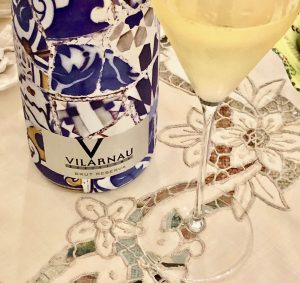Cava. Are you curious about it? So am I. Cava is sparkling wine made in Spain. It is made using the same method as in Champagne (the second fermentation takes place in the bottle), but using mostly indigenous Spanish grape varieties. I’m a sucker for indigenous varieties, so I was curious to give Cava a taste and to dig into the details of its production. We have tasted very few Cavas over the years and today’s cellar note gives us the opportunity to share two that were provided to us as tasting samples.
Cava has been produced in the Penedès wine region of Catalonia since at least the 1870s. Champagne, of course, was the inspiration. The vast majority of Cava is still made in Penedès, but the Cava D.O. (Denominación de Origen) includes islands of areas outside of Penedès as well.

In addition to the indication, Cava, you will find both the level of sweetness and the length of aging in the bottle before disgorgement on every bottle of Cava. The levels of sweetness are (from no sugar added to the sweetest): brut nature, extra brut, brut, extra seco, seco, semiseco and dulce. Cava Reserva is aged 15 months or more and Gran Reserva for 30 months or more. Cava without either indication is aged a minimum of 9 months on the lees.
Macabeu, Xarel·lo and Parellada are the major grapes used in Cava production. Also allowed by the regulating body are Garnacha, Trepat, Subirat, Monastrell (Mourvèdre) as well as Chardonnay and Pinot Noir. Now, let’s taste. I’m thirsty.
 Vilarnau Brut Reserva NV — pale yellow in the glass with persistent, small bubbles. Distinct citrusy, white flower and melon aromas are echoed in the flavor profile. Bubbles are mouth filling and precise. An interesting earthy, dry-mustard spiciness lingers with the flavors on the finish, which is very long and clean. 11.5% abv. SRP $14.99
Vilarnau Brut Reserva NV — pale yellow in the glass with persistent, small bubbles. Distinct citrusy, white flower and melon aromas are echoed in the flavor profile. Bubbles are mouth filling and precise. An interesting earthy, dry-mustard spiciness lingers with the flavors on the finish, which is very long and clean. 11.5% abv. SRP $14.99
50% Macabeo, 35% Parellada, 15% Xarel·lo produce a complex, unique and intriguing flavor profile. This is why I love indigenous varieties so much. This sparkling wine is bright, crisp, complex and finishes very clean. I was impressed by how persistent the bubbles were.
 Vilanaru Brut Reserva Rosé NV — medium salmon color in the glass with persistent, small bubbles. Ripe strawberry aromas follow to the flavors along with dusty earth and brilliant, citrusy acidity. The bubbles are mouth filling and precise. The finish is very clean and flavorful as the fruit flavors last a very long time. 12 % abv. SRP $15.99
Vilanaru Brut Reserva Rosé NV — medium salmon color in the glass with persistent, small bubbles. Ripe strawberry aromas follow to the flavors along with dusty earth and brilliant, citrusy acidity. The bubbles are mouth filling and precise. The finish is very clean and flavorful as the fruit flavors last a very long time. 12 % abv. SRP $15.99
Once again, I was pleasantly surprised by how delicious this cava is. I love the brightness of the flavors and the precision of the bubbles.
The Vilarnau family were members of Spanish nobility and their history in Penedès goes back to the 12th century. Cava was first sold under the Vilarnau label in 1949. In 1982 Vilarnau was purchased by the González Byass family of wines.
We invited friends over for a little pre-Valentine’s Day celebration and enjoyed these wines with soft cheese and Castelvetrano olives before dinner. If you’re curious about Cava and are looking for something a bit different for your Valentine’s Day celebration, consider either of these Cavas from Vilarnau. Both are delicious and either artistic bottle will add to the beauty of your celebration.
Cheers!